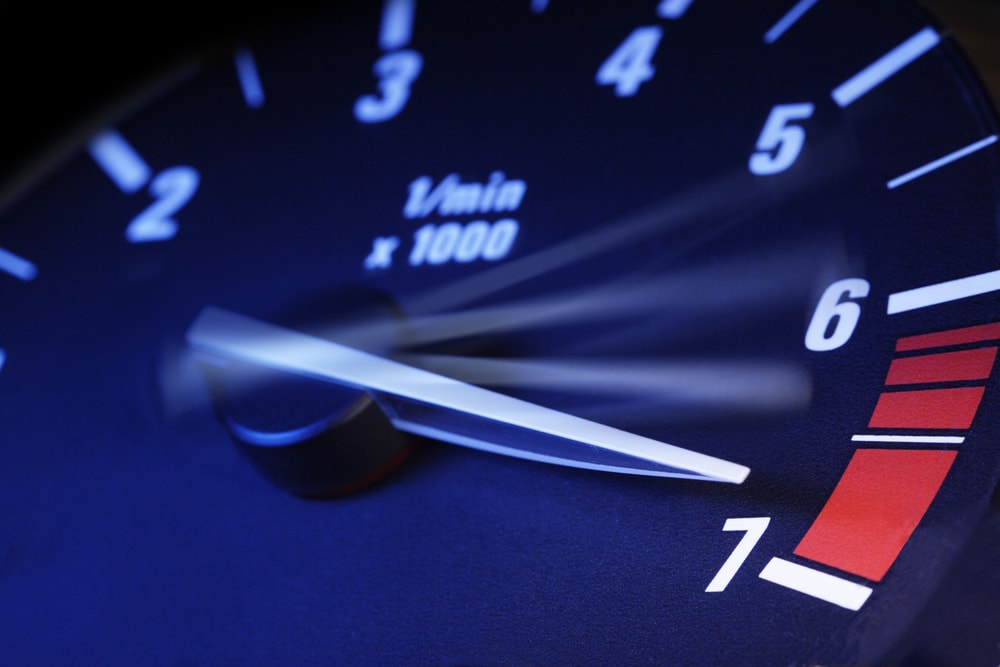Tachometer Basics: Whatever You Need to Know for Accurate Readings
Tachometer Basics: Whatever You Need to Know for Accurate Readings
Blog Article
The Significance of a Tachometer in Keeping Track Of Engine Rate and Performance in Automotive Applications
In the world of automobile engineering, the tachometer stands as a crucial tool in the chauffeur's toolbox, supplying a straight home window into the inner workings of an automobile's engine. Past its function as a simple gauge of revolutions per min (RPM), the tachometer acts as an important tool for lovers and specialists alike, providing real-time insights into engine efficiency and wellness. Comprehending the value of this tool exceeds surface-level monitorings, diving right into the detailed partnership between engine rate, power result, and total driving experience. As we explore the multifaceted function of the tachometer in automobile applications, a deeper recognition for its influence on automobile dynamics and efficiency starts to emerge.
Significance of Keeping An Eye On Engine RPM
Keeping track of engine RPM, or transformations per minute, is a vital facet of auto upkeep and efficiency analysis. Engine RPM straight associates with the rate at which the engine's crankshaft turns, indicating how rapidly the engine is running - tachometer. By keeping track of RPM, mechanics can examine the health and wellness of the engine, discover potential problems, and fine-tune performance. An irregular RPM analysis might signify troubles such as engine misfires, defective stimulate plugs, or concerns with the fuel distribution system. Consistently high RPM analyses could suggest aggressive driving habits or the demand for a greater gear shift to improve gas efficiency.
Moreover, keeping an eye on engine RPM is necessary for performance analysis in racing and high-performance automobiles. In summary, keeping an eye on engine RPM is not only crucial for finding issues however also for enhancing engine efficiency in various automobile applications.

Advantages of Real-Time Data
In auto applications, real-time information plays an important function in offering instant understandings right into the performance and problem of the automobile. By continually checking various criteria such as engine rate, temperature, fuel intake, and much more, real-time information provides various advantages that add to boosted effectiveness and safety when traveling.
One substantial advantage of real-time information is its capacity to sharp drivers and service technicians to any kind of abnormalities or issues immediately. This positive strategy makes it possible for quick identification of prospective problems, allowing for prompt interventions to avoid more damage or failures. Furthermore, real-time data promotes performance optimization by providing prompt responses on driving behaviors and engine effectiveness. Drivers can readjust their behavior in real-time based upon this details to achieve much better fuel economic situation and lengthen the lifespan of their vehicle.

Additionally, real-time data plays a vital duty in contemporary vehicle diagnostics, making it possible for professionals to promptly detect and deal with malfunctions. This results in decreased downtime, reduced upkeep expenses, and ultimately, enhanced total lorry reliability and long life (tachometer). By harnessing the power of real-time information, auto stakeholders can make informed choices that positively influence both the performance and durability of the vehicle
Effect On Equipment Shifts
Reliable gear changes in automobile applications substantially affect general efficiency and driving experience. The tachometer plays an important function in enhancing gear shifts by providing real-time engine speed information to the vehicle driver. When approaching the redline on the tachometer, it indicates the chauffeur to upshift to avoid over-revving the engine and triggering prospective damages. On the various other hand, downshifting at the ideal minute can assist preserve the engine in its power band, making certain responsive velocity when needed.
In addition, the tachometer aids in accomplishing smoother equipment shifts, especially in hands-on transmissions. By checking engine speed, motorists click reference can carry out gear changes at the optimal RPM array, reducing jerking motions and lessening endure the transmission components. This precision on duty adjustments not only boosts driving convenience but also adds to sustain efficiency.
Enhancing Fuel Effectiveness
Given the crucial role the tachometer plays in optimizing equipment changes for efficiency and engine wellness, it directly contributes to maximizing fuel performance in automotive applications. By offering real-time responses on engine rate, the tachometer helps motorists in keeping the most efficient RPM array for gas economic situation. When vehicle drivers consistently check the tachometer and change their driving practices appropriately, they can stay clear of unneeded gas usage brought on by over-revving or lugging the engine.
Furthermore, the tachometer helps vehicle drivers recognize the most fuel-efficient equipment to be in at any kind of provided minute, preventing the engine from functioning harder than essential. In verdict, the tachometer offers as a beneficial tool in enhancing fuel effectiveness by promoting ideal driving practices and recognizing locations for renovation in the lorry's performance.

Taking Full Advantage Of Engine Long Life
The tachometer's role in monitoring engine speed and performance is crucial in guaranteeing the durability of vehicle engines. Keeping track of the tachometer allows motorists to remain within the suggested RPM variety for their automobile, protecting against unneeded strain on the engine and expanding its lifespan.

Conclusion
To conclude, the tachometer plays a crucial function in keeping an eye on engine rate and redirected here efficiency in auto applications. By giving real-time data on RPM, it permits effective equipment changes, enhanced fuel performance, and taken full advantage of engine durability. This tool is crucial for keeping optimum engine efficiency and guaranteeing the official site general functionality of a car.
Report this page